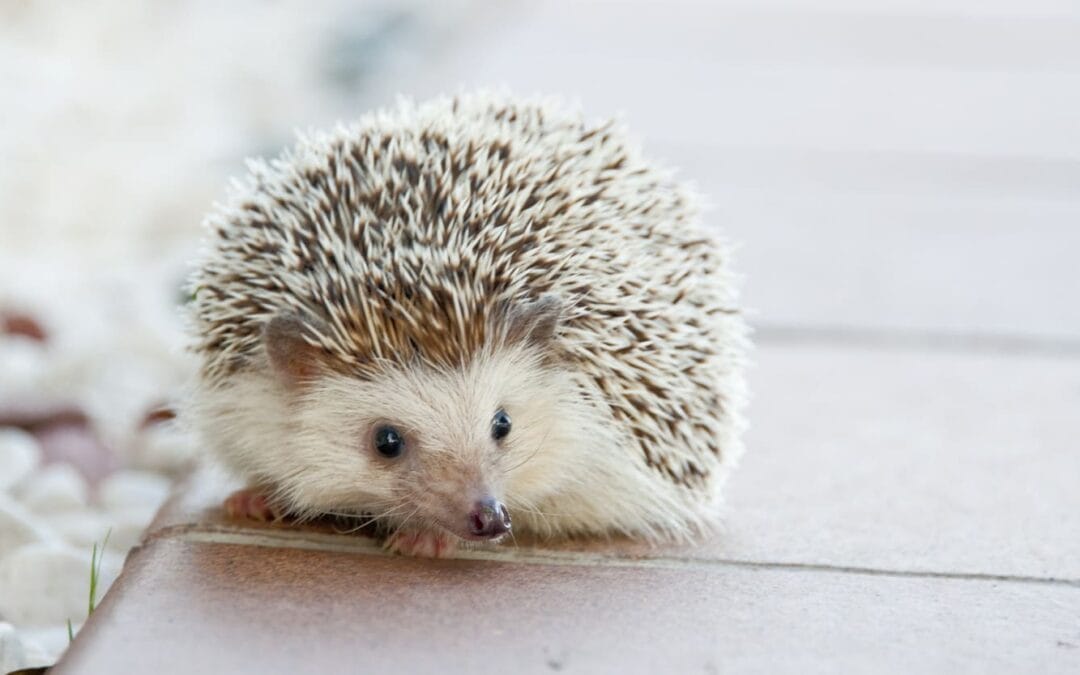
Superbug MRSA arose in hedgehogs long before clinical use of antibiotics.
In an article recently shared by ScienceDaily, researchers have found evidence that a type of the antibiotic resistant superbug MRSA arose in nature long before antibiotics were used in humans and livestock. It was discovered that hedgehogs carry a fungus and a bacteria on their skin, which battle one another to survive. While the fungus secretes antibiotics to kill the bacteria, the bacteria has evolved its own antibiotic resistance, becoming Methicillin-resistant Staphylococcus aureus, or MRSA.
An international collaboration from University of Cambridge, the Wellcome Sanger Institute, Denmark’s Serum Statens Institut and the Royal Botanic Gardens, Kew, traced the genetic history of Staphylococcus aureus, which they believe first developed resistance to methicillin around 200 years ago. Researchers found that up to 60% of hedgehogs throughout Europe and New Zealand carry a type of MRSA called mecC-MERSA, which causes 1 in 200 of all MRSA infections in humans.
Researchers from this study, which is published in Nature, think that “antibiotic resistance evolved in Staphylococcus aureus as an adaptation to having to exist side-by-side on the skin of hedgehogs with the fungus Trichophyton erinacei, which produces its own antibiotics.” Dr. Ewan Harrison, a senior author on the study suggests that “it wasn’t the use of penicillin that drove the initial emergence of MRSA, it was a natural biological process. We think MRSA evolved in a battle for survival on the skin of hedgehogs, and subsequently spread to livestock and humans through direct contact.”
Antibiotic resistance in bugs that cause human infections, driven by the clinical prescribing and misuse of antibiotics, is reaching a dangerously high level around the world. Because the majority of antibiotics in use today originate from nature, researchers believe that resistance to antibiotics already exists in nature as well.
Professor Mark Holmes, researcher at the University of Cambridges Department of Veterinary Medicine, adds that it “isn’t just hedgehogs that harbour antibiotic-resistant bacteria — all wildlife carries many different types of bacteria, as well as parasites, fungi and viruses. Wild animals, livestock and humans are all interconnected: we all share one ecosystem. It isn’t possible to understand the evolution of antibiotic resistance unless you look at the whole system.”
Click here to view this article.
January 2022
TRADUCCIÓN DE GOOGLE:
Superbug MRSA surgió en erizos mucho antes del uso clínico de antibióticos.
En un artículo compartido recientemente por ScienceDaily, los investigadores encontraron evidencia de que un tipo de superbacteria MRSA resistente a los antibióticos surgió en la naturaleza mucho antes de que los antibióticos se usaran en humanos y ganado. Se descubrió que los erizos portan un hongo y una bacteria en la piel, que luchan entre sí para sobrevivir. Mientras que el hongo secreta antibióticos para matar a la bacteria, la bacteria ha desarrollado su propia resistencia a los antibióticos, convirtiéndose en Staphylococcus aureus resistente a la meticilina o MRSA.
Una colaboración internacional de la Universidad de Cambridge, el Instituto Wellcome Sanger, el Serum Statens Institut de Dinamarca y los Jardines Botánicos Reales de Kew, rastrearon la historia genética de Staphylococcus aureus, que creen que desarrolló resistencia a la meticilina por primera vez hace unos 200 años. Los investigadores descubrieron que hasta el 60 % de los erizos de toda Europa y Nueva Zelanda portan un tipo de MRSA llamado mecC-MERSA, que causa 1 de cada 200 de todas las infecciones por MRSA en humanos.
Los investigadores de este estudio, que se publica en Nature, piensan que “la resistencia a los antibióticos evolucionó en Staphylococcus aureus como una adaptación a tener que coexistir en la piel de los erizos con el hongo Trichophyton erinacei, que produce sus propios antibióticos”. El Dr. Ewan Harrison, autor principal del estudio sugiere que “no fue el uso de penicilina lo que impulsó la aparición inicial de MRSA, fue un proceso biológico natural. Creemos que MRSA evolucionó en una batalla por la supervivencia en la piel de los erizos y, posteriormente, se propagó al ganado y a los humanos a través del contacto directo”.
La resistencia a los antibióticos en los insectos que causan infecciones en humanos, impulsada por la prescripción clínica y el mal uso de los antibióticos, está alcanzando un nivel peligrosamente alto en todo el mundo. Debido a que la mayoría de los antibióticos que se usan hoy en día se originan en la naturaleza, los investigadores creen que la resistencia a los antibióticos también existe en la naturaleza.
El profesor Mark Holmes, investigador del Departamento de Medicina Veterinaria de la Universidad de Cambridge, agrega que “no son solo los erizos los que albergan bacterias resistentes a los antibióticos, toda la vida silvestre porta muchos tipos diferentes de bacterias, así como parásitos, hongos y virus. Los animales salvajes, el ganado y los humanos están todos interconectados: todos compartimos un ecosistema. No es posible comprender la evolución de la resistencia a los antibióticos a menos que observe el sistema completo”.
Haga clic aquí para ver este artículo.
enero 2022


Comentarios recientes